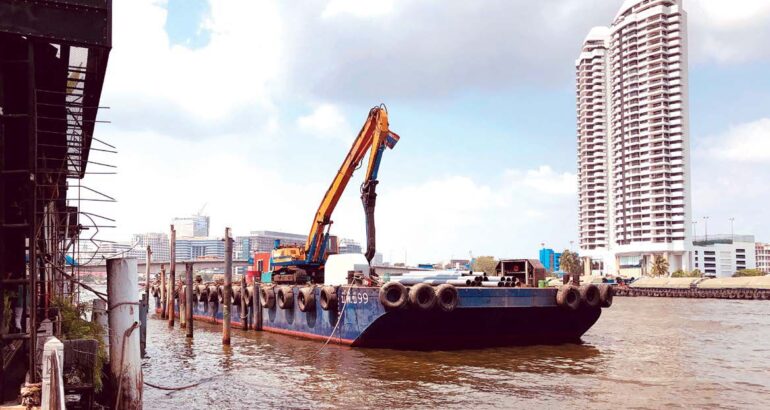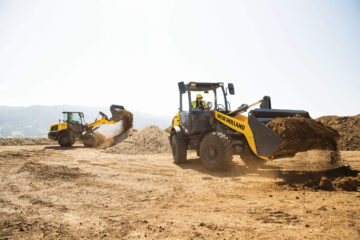The Deck Barge Safety guide by the U.S. Department of Labor’s Occupational Safety and Health Administration (OSHA) is a go-to document for how to preventing injuries from workplace hazards on deck barges.
Approximately 4,000 deck barges operate in the United States, using different types of winches and other equipment in a variety of operations. Hazards related to the use of machinery and equipment can result in injuries to hands, feet, or limbs that become caught in moving machinery; head and other injuries from being struck by falling objects or moving equipment; and burns. Other potential hazards include getting pinned under a load; falling off equipment; and electric shock.

Here’s what everyone who works around deck barges should know about their equipment.
To reduce hazards from machinery and equipment: • Inspect all equipment before use. • Maintain equipment properly. Shut down and lockout the power source before repairing mechanical systems. Make repairs according to the manufacturer’s guidelines. • Ensure that the person using the equipment is trained in its proper use and maintenance. • Install appropriate rails, temporary or permanent, to avoid equipment being driven off the barge or dock. • Ensure retaining pins are properly installed and positively secured with a keeper or locking device. • Emergency shut-offs must be easily accessible, and sufficient guarding should be used for equipment controls.
Hoists, Cranes and Derricks
Hazards of hoists include being struck by a heavy object, such as the boom or the load being moved. To reduce these hazards: • Stay clear when a hoist is being used unless you are part of the procedure and, in which case, never stand under a load or boom with a suspended load. • Wear personal protective equipment, such as head, foot, eye, and hand protection at all times. • Assess the hoisting systems for structural soundness by inspecting regularly for problems with welds, rivets, chains, pulleys, lines, blocks, hooks, etc. • Secure power blocks with a safety chain. • Ensure that cranes in use are secured to the barge. • Do not try to help lift a load being hoisted.
Winches
Operating or working near winches may potentially expose employees to hazards such as body parts caught in a winch drum, being struck by a broken line or cable, and tripping over a line or cable. • Use a device or tool, never your hand, to keep the winch line spooling properly. • Enclose the winch drum in a cage if practical. • Stay off the deck unless you are part of the operation. • Never stand in, on, over, or in line with lines or cables connected to winches when they are under tension. The danger zone lies within 15 degrees of either side of a line under tension. • Never step on or walk over the winch drum. • Inspect the winch system regularly for problems associated with general or localized deterioration, cracked welds, and other structural, mechanical, or electrical deficiencies. • Inspect lines and cable systems regularly, including blocks, hooks, and associated components, for signs of damage or deterioration. • A guard should be installed between the winch operator and the connected cables to protect the operator from potential whiplash. • Never stand in the bight of a line.

For More Information About Machinery and Equipment Safety
The OSHA Shipyard Employment eTool: Gear and Equipment for Rigging and Materials Handling. can be found at www.osha.gov/SLTC/etools/shipyard/ standard/material_handling/index_mh.html.
Republished from Marine Construction Magazine Issue V, 2022









